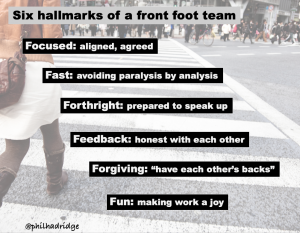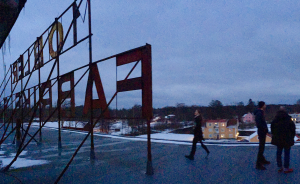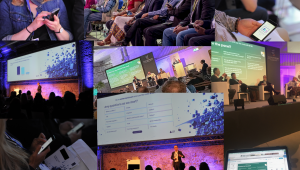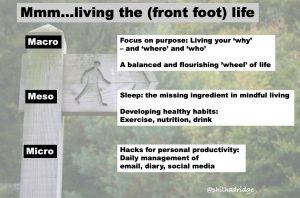My colleague David Dowe and I were chatting recently. We got onto thinking about what it takes for an enterprise to be ‘governed’ well and to avoid governing systems going wrong (or at least not work well enough).
There is a wide variety of ways organisations are established and led from owner run SMEs to the largest offices of State. ‘Governance’ is more likely to be explicitly discussed and not just assumed where there are formal structures such as Company Boards with non-executives, Charities with Trustees or campaign Steering Committees.
For many years now, there has been a bit of a fashion for ‘Good Governance’. What does that mean – and how can it be assured?
In answering this question, we have drawn on our experience of working in all sorts of environments over the last couple of years: from technology accelerators to school systems; professional associations to conservation charities; improvement projects to academic institutions.
So, this is our governance ‘top ten’:
1) The FRE framework for organisational success brings three fundamental roles for governing groups to mind. The first part of FRE is thinking of Focus: is the purpose of the organisation shared? Is the strategy clear – is it understood? Has the governing group set out its intentions (and limitations) for the wider staff to work toward and within? Second in the FRE framework is taking Responsibility: do governing boards avoid overstepping the mark and resist micro-managing the executive? The third part of FRE is the Example of senior leaders, including board members or trustees, in setting the cultural tone for an enterprise. This is a crucial, and often neglected, role of those involved in the governance of an organisation. The remainder of this checklist probes further into this territory of direction, scope and culture.
2) Governing groups are often expected to be many things: a sounding board giving advice; maybe providing a sort of litmus test before an idea is rolled out; and frequently a decision-making body too. It is a heady mix trying to be a critical friend to the executives and part of checks and balances in securing the best decisions and way forward. It is necessary to be clear on the scope of the governing roles – and to be sure that the governing group has the skills, and more important, the attention and awareness to do the job. Is the group clear what its primary purposes are? Does it spend time giving an overall direction with an overall strategy? Does it recruit and support a good CEO and then give them a clear sense of their autonomy and limitations, including how their performance will be reviewed? How far is the governing group involved in assuring itself that overall goals are being achieved, the finances are secure and the best possible organisational culture is established?
3) There are many cautionary tales of governing groups failing to take an interest, or get an accurate impression of, organisation culture (for example). Many boards govern through dashboards and metrics – but organisation leaders can game the measures and Boards find them hard to discern.
4) The mechanics of governing group meetings can be inefficient with an astonishing amount of managerial time spent preparing for board meetings, reporting, following up issues. There can be a degree of gaming and a seeming disconnect from the actual business sometimes.
5) Finding ways to keep in touch with both team delivery and organisation performance without overstepping the line into micro-management is a key balance and challenge for governing groups. Boards tend to deal in papers and presentations. It is very hard to really understand what staff are feeling and know whether the CEO is doing a great job or not. Their information often comes from others inside and outside of the organisation which introduces a time lag. Finding ways for the Board to get early warnings of unrest, confusion and non-attainment are important. Useful indicators can be the experience of interacting with staff who are only occasionally and unexpectedly encountered further into the organisation, spending time out and about and being alert to ‘weak signals’ (e.g. through complaints).
6) In doing its difficult work, is the governing group willing to have Critical conversations not just around issues of strategy and organisation process but also culture? For true consensus to emerge important issues need to be named and given sufficient air time on frequently packed agendas. In shaping the agenda and discussion it is important to recall previous discussions and reports – not just taking ‘matters arising’. Finding ways to remember previous promises made by the executive and have time to explore and question that productively and collaboratively.
7) Given these challenges, there are often choices about how to arrange (or, frequently, rearrange) governing systems. In our experience, there tends to be an over focus on the structural options at the expense of the behavioural. For example, a committee structure is more likely to be reviewed than the sort of decision making and scrutiny discussions to achieve a real improvement. There is a sort of ‘Inverse Attention Law’: where the changes that are most needed are less likely to be considered. Using a biological metaphor, sometimes the ‘Anatomy’ (that is, the structure of a board or its sub groups) needs changing, but more often it is the ‘Physiology’ of how the existing parts work together that is crucial. Getting the governing groups ways of working right is often more necessary than the overall wiring.
8) The role of the Chair is crucial. There are many high-powered Boards where strong personalities are quite deliberately given a platform to speak as separate voices. It is possible for the management team to take away different opinions on direction or performance. It is easy for chairs to either let all the voices speak (wishing to be seen as inclusive) or become too dictatorial. Pulling together a wider ranging debate into a clear corporate line can be difficult to achieve. This summing up is sometimes avoided to allow personal agendas to be pursued through the ‘smoke and mirrors’ after a meeting. Chairs are often chosen for their sector knowledge. However, the key role is to manage a good discussion and lead the development of a strong team (where you can disagree well en route to agreeing a collective line that all are publicly committed to, and where the group holds each other to using the best possible behaviours).
9) It is possible to invest too much power in the board, council or steering committee. Sometimes board members are very high powered and sit on lots of governing groups, possibly collecting too many appointments and not having sufficient time to give to their role. So it can be useful to find other ways to improve the advisory architecture so that checks and balances are in place. Setting up working groups and advisory groups can be used to show organisations are engaging more widely – but they can run into the many dozen, leading to a lack of consensus or good ideas get lost.
10) Given all this, what is a useful way forward? Well quite simply, take time to review how you are doing. Be prepared to question the “Inverse Attention Law”: the structure might need rejigging and processes rewiring. However, it is likely that securing the best behaviours will be a key task: achieving the physiology rather than the anatomy. Do you meet well? Do you have good conversations? It might seem a bit prosaic, but reviewing how your meetings go can be a good place to start, using something like this assessment – which can be presented in a variety of ways including as a wheel, and can be tracked over time. It is a simple first step: governing made easy.
So “Just Governance”? It is not necessarily simple and straightforward. And yet it needs to be thought through and fair. It can then provide amazing value added oversight with a light touch. Helping the right things to happen, and helping avoid things going wrong.




